 Beloved Around the World: the Hibiscus
Beloved Around the World: the HibiscusLove for hibiscuses extends literally around the world. There are several hundred species in this large genus of flowering annuals and perennials. Here we'll focus on three main flower types, three species, and their distinctive characteristics.
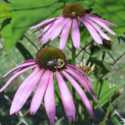 The Tennessee Coneflower: Endangered Species Success Story
The Tennessee Coneflower: Endangered Species Success StoryOnce thought to be extinct, the Tennessee Coneflower (Echinacea tennesseensis) had a place on the Endangered Species List for decades. Happily, it has now been removed from the list.
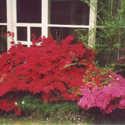 Azalea: Spectacular Shrub of the South
Azalea: Spectacular Shrub of the SouthOne of the most popular shrubs in the South, the Azalea is spectacular when in bloom.
 The Need for Native Plants and Wildflowers
The Need for Native Plants and WildflowersLoss of songbird habitat, fewer Monarch butterflies, mysterious bee deaths … just a few of the reports that seem to be appearing in the news more and more frequently these days. That’s the bad news. The good news is that it’s possible to do something to restore natural habitats for birds, bees, butterflies, and other wildlife in our own landscapes and gardens.
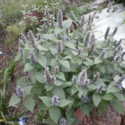 Beautiful 'Blue Fortune' Agastache
Beautiful 'Blue Fortune' AgastacheI didn't grow Agastaches out West. Since moving to Tennessee, I have discovered the many positive attributes and beautiful colors of this wonderful plant.
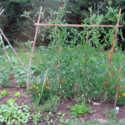 The Potager Garden
The Potager GardenThe delightful potager garden has its origin in Europe, specifically in France. Over the centuries, many inventive European gardeners have left their stamp on this style of gardening.
 Beautiful Lamb's Ears
Beautiful Lamb's EarsOne of my favorite foliage plants is the 'Silver Carpet' variety of Lamb's Ears (Stachys byzantina). It's tough and semi-drought-tolerant.
 Some of My Favorite Xeriscape Plants Are Real Stinkers
Some of My Favorite Xeriscape Plants Are Real StinkersI love stapeliads, especially Stapelia gigantea. Some people say the blooms emit a terrible odor. Others say they can't smell them at all.
 A Beautiful Day in the Neighborhood
A Beautiful Day in the NeighborhoodThe Nature Conservancy calls Tennessee the most biologically rich of all the inland states. As I walk through my property and neighborhood, I see many exotic plants. Fortunately, I also see an abundance of native plants.
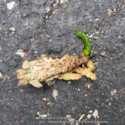 Bagworms and the Damage They Can Cause
Bagworms and the Damage They Can CauseIn the South as in other places, bagworms can be a serious problem. Every year they defoliate and destroy many valuable evergreens and other landscape plants.
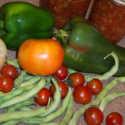 Vegetable Canning Safety
Vegetable Canning SafetyIt's always good to remember that vegetable-processing times should be followed exactly to ensure that your home-canned veggies (or other foods) are safe to eat.
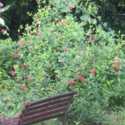 Honeysuckle Vine Can Evoke Strong Feelings
Honeysuckle Vine Can Evoke Strong FeelingsNot only can it evoke strong feelings with its powerful fragrance, but the much-maligned Japanese Honeysuckle (Lonicera japonica) can also evoke feelings of anger if it escapes into your landscape or beyond. Fortunately, there are other species of this vine that can provide the positive characteristics of honeysuckle without as many of the negative ones.
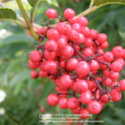 Elderberries
ElderberriesLiving in Washington State for two years resulted in my first introduction to elderberries (Sambucus sp.). A friend took me on a hike into the woods and showed me where they were and how to identify them. The resulting jelly was wonderful.
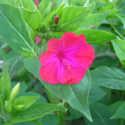 Four o'Clocks
Four o'ClocksMost people who have experience with these tuberous plants that thrive in the heat of summer seem to have definite opinions about Four o'Clocks. Because they are prolific re-seeders, some find them an annoyance to be yanked out of the garden asap. Others love them, as I do.
 Variegated Vinca Vine - Love It Or Hate It?
Variegated Vinca Vine - Love It Or Hate It?I seem to have a love-hate relationship with the variegated vinca vine. I know its invasive tendencies, but I still admire it for its hardiness, its striking blue-purple flowers, and its lovely variegated foliage.
 Pass-Along Plants - a Southern Tradition
Pass-Along Plants - a Southern TraditionI'm sure pass-along plants are a tradition in other parts of the country besides the South. Today, some of the plants of our southern heritage can only be obtained at specialized nurseries or from friends and neighbors.
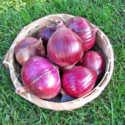 Short-Day, Intermediate-Day, and Long-Day Onions
Short-Day, Intermediate-Day, and Long-Day OnionsMany onion varieties will be sold as either short-day onions, intermediate-day onions, or long-day onions.
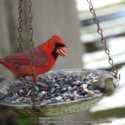 Landscaping To Attract Cardinals
Landscaping To Attract CardinalsCardinals are among the most colorful and popular backyard birds. Providing a landscape that will attract them is well worth the effort.
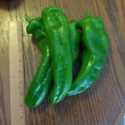 Giant Marconi Sweet Peppers
Giant Marconi Sweet PeppersMy new favorite sweet pepper to grow at home is the hybrid Italian variety, 'Giant Marconi' (Capsicum annuum 'Giant Marconi'). It's one of the largest of the Italian sweet peppers and has an oblong profile with a slightly lobed stem end. The fruits reach 6-8 inches or more in length.
 The Bitter Herbs
The Bitter HerbsBitter herbs (also known as bitters) have been used for thousands of years. They are frequently used in cooking, in herbal and alternative medicine, and in the religious ceremonies of numerous cultures around the world. These herbs can be powerful enough to cause physiological reactions within the body. So, what are the bitter herbs?
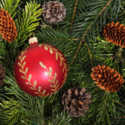 Recycle Christmas Trees To Benefit Birds
Recycle Christmas Trees To Benefit BirdsEvergreen trees are good for protecting bird feeders from predators and wind. After the holidays, recycle your old Christmas tree to help the birds.
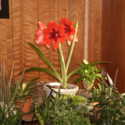 Use Leftover Cooking Water To Water Plants
Use Leftover Cooking Water To Water PlantsWhen you boil or steam vegetables, don't pour the water down the drain. Save the cooled water and use it to water potted plants. Many plants will respond well to the added nutrients from the water. Fruit and vegetable peels can also be soaked in water for about eight hours before the water is used to water houseplants. Strain out the peelings and toss them onto the compost pile.
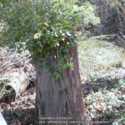 Brush Piles
Brush PilesVery few projects are as easy to do or have as much benefit for wildlife as the creation of a brush pile.
 Establishing a Monarch Waystation
Establishing a Monarch WaystationIt doesn’t take a lot of space or expense to establish a Monarch Waystation, and the rewards can be great.
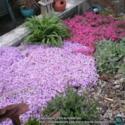 Success with Wildflowers
Success with WildflowersGrowing wildflowers successfully is easiest if you don't try to fight what happens naturally in your location. Find out which wildflowers are native to your area and be true to your region when selecting varieties for your garden. While it can be very tempting to try wildflowers that flourish in other parts of the country, the best results can be achieved by growing only species that are native to your area.
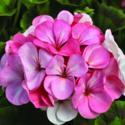 2013 All-America Selections Award Winners
2013 All-America Selections Award WinnersIf you are anything like me, you spend what might be deemed as a considerable amount of time admiring and researching plants. After all, that’s what brought us together here at ATP. The All-America Selections have been made for 2013 and include some wonderful plants to consider for the year.
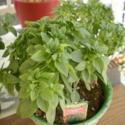 Basil and Bugs
Basil and BugsAphids are drawn to prolific leaf growth and may attack herbs such as basil.
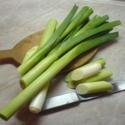 Leeks for Container Vegetable Gardening
Leeks for Container Vegetable GardeningAre you a container gardener who wants to grow more vegetables? Looking for an onion flavor without the heartburn? The mild and sweet leek may be your answer.
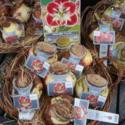 A Quick Bulb Tip
A Quick Bulb TipWhen planting bulbs, make sure the bottom of the bulb is in direct contact with the bottom of the planting hole. A gap can allow an air pocket to form and possibly cause the bulb to rot.
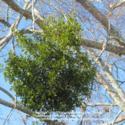 Value Mistletoe
Value MistletoeMistletoe has often been considered a pest that kills trees as well as degrading and devaluing natural habitat. The plant has now been recognized as an ecological keystone species, playing "a critical role in maintaining the structure of an ecological community, affecting many other organisms in an ecosystem and helping to determine the types and numbers of various other species in the community" (Wikipedia).
 Glossary: Cleistogamus
Glossary: CleistogamusCleistogamus is a Greek word meaning closed mouth. Cleistogamus flowers are small, inconspicuous closed self-pollinating flowers that are additional to and often more fruitful than the open showier flowers on the same plant. Violas and peas are examples of cleistogamus plants.
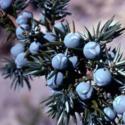 Harvesting Juniper Berries
Harvesting Juniper BerriesEdible common Juniper berries (Juniperus communis) turn from green to dark blue when ripe and to black when dried. To dry them, pick only ripe blue berries and allow to dry. Crush the dried berries well just before using; flavor will decline quickly when exposed to air. Three or four berries should flavor most dishes without being overpowering. Pregnant women and those with kidney problems should avoid Juniper berries due to their diuretic qualities.
 Glossary: Naturalized, Invasive and Noxious
Glossary: Naturalized, Invasive and NoxiousThe terms “invasive” and “naturalized” are used to refer to both garden plants and non-native plants growing in wild areas.
 Cold Weather Gardening Tip
Cold Weather Gardening TipWatering before a predicted freeze helps outoor plants, especially container plants, make it through a hard freeze by allowing the plants to take up moisture before the soil or ground is frozen, preventing water from reaching the root zone. Making sure your outdoor plants have adequate hydration is one of the best ways to protect them from harsh weather.
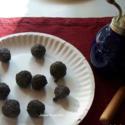 Seed Bombs
Seed BombsA fun, easy, and environmentally friendly way to plant large or difficult to reach areas is with seed bombs. A typical recipe for seed bombs is: 5 parts dry powdered natural clay, 3 parts dry organic compost,1 part seed,1-2 parts water. After mixing together all of the dry ingredients, slowly add water to the mixture until the mixture sticks together but isn't too wet or so dry and crumbly that you cannot roll it into balls. Roll into quarter-size balls. Let dry for 48-72 hours. Bombs away!
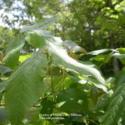 Poison Ivy Tip
Poison Ivy TipNeed to eradicate poison ivy in your yard this spring? If the leaves are still young and shiny, spray the plant with a solution of 4 tablespoons pure liquid soap (not detergent) mixed in a quart of water. This can kill surrounding vegetation as well so be careful when spraying. And don't handle any parts of the dead plants without gloves and skin protection since the toxic oil (urushiol) can remain active for years in a dead poison ivy plant.
 Growing and Making Your Own Spices
Growing and Making Your Own SpicesIn the duo of "herbs and spices", herbs tend to get most of the attention when it comes to growing them and making seasonings and flavorings at home. However, a number of spices are equally as easy to grow and preserve yourself. There's also the added reassurance of knowing exactly how they were grown.
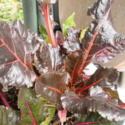 Swiss Chard for Spring Planting
Swiss Chard for Spring PlantingThis green leafy vegetable has to be one of my all-time favorites for a number of good reasons. If you've never tried growing it, there's no time like the present. It's perfect for spring planting, amazingly easy to grow, and very resilient.
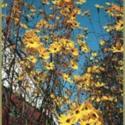 Little House on the Suburban Prairie
Little House on the Suburban PrairieAmerica has become a nation of suburbs and now exurbs. There's no getting around it. More Americans live there than anywhere else these days. But does that mean we all need to have a parcel of ground with a solitary shade tree in the front yard and a patch of lawn to manicure? I hope not.
 Toxic (to Pets) Plants
Toxic (to Pets) PlantsGardeners love their plants and their pets. Many popular house plants such as Ivy and Philodendron are poisonous to cats. The following list contains a few of the more common house plants toxic to them: Arrowhead Fern, Amaryllis, Anthurium, Avocado, Cactus, Caladium, Chrysanthemum, Creeping Fig, Crocus, Croton, Daffodil, Dieffenbachia, Euphorbias, Fiddleleaf Fig, Holly, Hydrangea, Ivy, Easter Lily (most lilies are highly toxic to cats), Mistletoe, Narcissus, Philodendron, Tomato leaves.
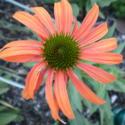 A Drought-Tolerant Garden
A Drought-Tolerant GardenThe year 2011 was a violent weather year in the US, with at least 12 weather-related disasters exceeding a billion dollars in damage. Some say it was Earth's most extreme weather year since 1816. Much of the country suffered from record heat and drought . . . and so did the yards and gardens.
 Bokashi for the Garden
Bokashi for the GardenBokashi is a Japanese word literally translated as shading off. It has come to denote the process of anaerobic fermentation of organic waste that produces what is known as beneficial and effective microorganisms. The resulting organic material might be likened to probiotics for the soil.
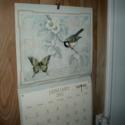 Keep a Gardening Calendar
Keep a Gardening CalendarJanuary is a good time to start keeping a personal gardening calendar. Use any type of calendar you like, but a wall calendar that already has large, empty blocks of space allotted for each day is ideal to hang where it can easily be seen daily. Hang a pen along with it to jot down notes, garden observations, and reminders for future reference.
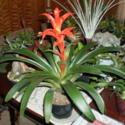 A How-To Guide for Propagating Bromeliads
A How-To Guide for Propagating BromeliadsWhen it comes to separating a bromeliad offset, often called a pup, from the mother plant, many people develop a case of "separation anxiety." I know I did. While it isn't terribly difficult to do, there are some basic guidelines to follow in order to achieve success.
 Uses for Mesh Bags
Uses for Mesh BagsReuse mesh produce bags to store bulbs and tubers. A small plastic nursery pot placed in the bottom of the bag helps keep the mesh extended and makes it easier to insert and remove tubers. The mesh bags are also good for scrubbing birdbaths, garden tools, and other implements without scratching and can be used for stuffing with nesting materials to hang outside for the birds in spring.
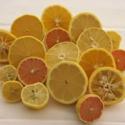 All About Grapefruit, Limeys, and Orange Conservatories
All About Grapefruit, Limeys, and Orange ConservatoriesMost of us are aware that we need a certain amount of Vitamin C daily in order to maintain optimal good health, but winter is a time when our bodies may need additional amounts of this vital nutrient. Citrus fruits such as grapefruit, limes, lemons, and oranges are a great-tasting way to add more Vitamin C to our diets. You may even decide to grow your own.
 The History of the Poinsettia
The History of the PoinsettiaFew plants are as closely associated with any holiday the way the poinsettia is with Christmas. It's an intriguing plant with an interesting history.
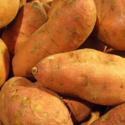 All About Sweet Potatoes
All About Sweet PotatoesSweet potatoes are nutritional powerhouses, but they enjoy less popularity in America than in most parts of the world. Here, the white spud is king. Apart from the color, the two do bear a strong resemblance, but some differences emerge when you dig a bit deeper.
 Sprouting Grains
Sprouting GrainsSprouting seeds for eating is easy, interesting, and extremely nutritious.
 The Hummingbirds Are Gone Now
The Hummingbirds Are Gone NowIt always makes me a little melancholy when I realize that the Ruby-throated Hummingbirds have left here on their annual fall migration to southern Mexico, Central America, and even as far away as South America.
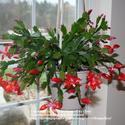 All About Schlumbergera
All About SchlumbergeraWinter blooms can be especially enchanting and are very much appreciated by most gardeners. The genus Schlumbergera provides us with beautiful blooms during the Thanksgiving and Christmas holidays and beyond. Let's take a closer look at these plants and learn how to successfully cultivate their beautiful blooming colors.
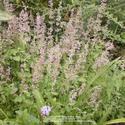 A Primer for Drying and Preserving Herbs
A Primer for Drying and Preserving HerbsThere are few things easier to preserve than herbs. Here we will explore some of the basics of drying and storing them.
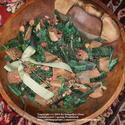 What To Do with All Those Herbs
What To Do with All Those HerbsGrowing herbs can be addictive. You begin with one or two small plants in a window and end up with an entire herb garden. It's fun and relatively easy to grow them, and you just might reap a bountiful harvest. Here are some ideas for what to do with all those wonderful herbs.
 Summer Stars of My 'Dog Days' Garden
Summer Stars of My 'Dog Days' GardenThe move from California to Tennessee brought with it a change in plant selections and gardening techniques. What grows well there frequently does not grow here at all. The most prominent plant diseases and pests in the two locations can also differ quite markedly. Starting over has been a real challenge.